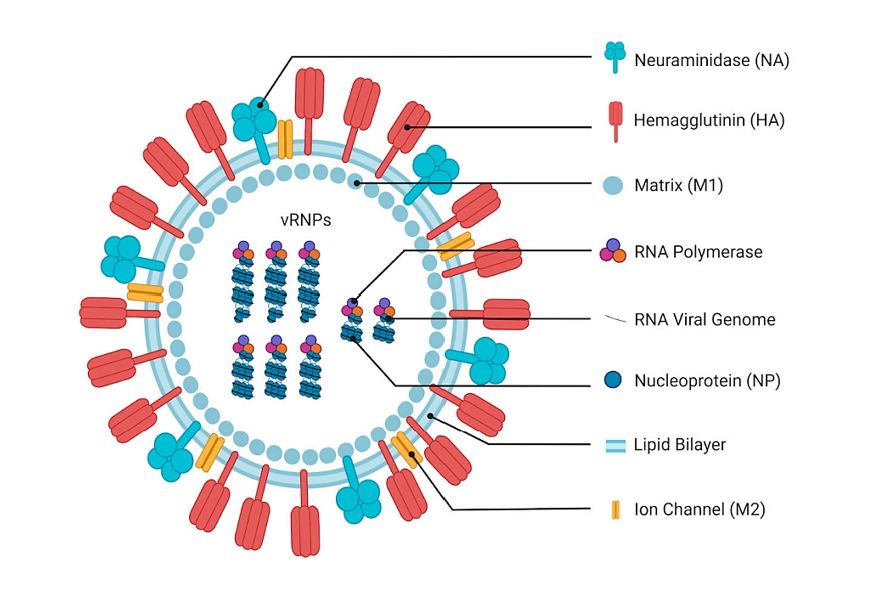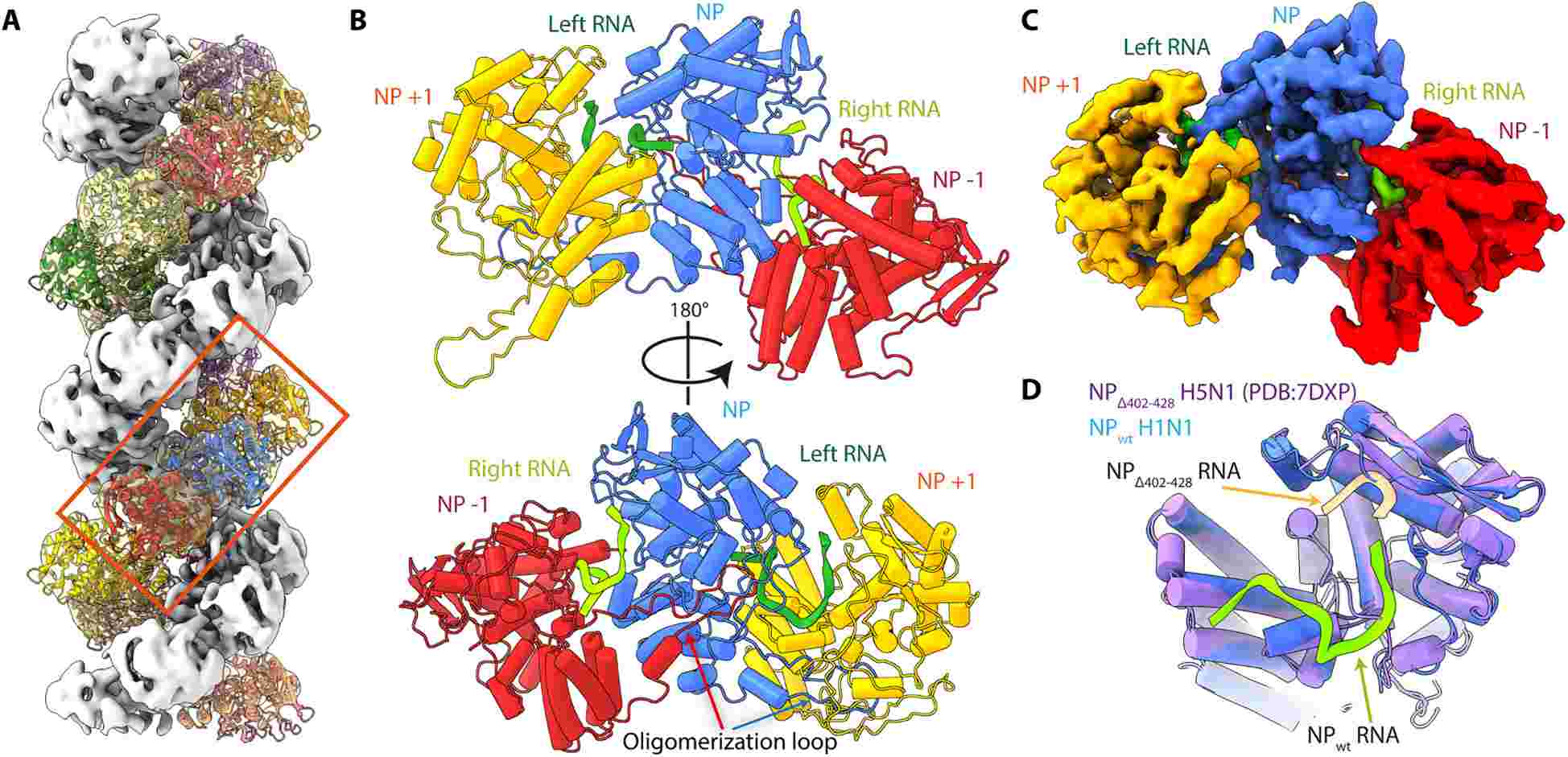Structural Research of Avian Flu Virus
The avian influenza virus (AIV) poses a significant challenge to the global public health system due to its widespread spread and relatively high mortality rate. AIV belongs to the genus influenza A of the family Orthomyxoviridae and is an influenza virus that mainly affects birds (including poultry and wild birds). It has a genome of eight fragments, encoding at least 11 different proteins, including hemagglutinin (HA) and neuraminidase (NA) glycoproteins. For HA, the range of these subtypes is H1 to H16; For NA, the range of these subtypes is N1 to N9. In recent years, scientists have been studying the structure of AIV, which is crucial for disease monitoring, vaccine development, antiviral drug design, understanding the interaction between hosts and pathogens, and evaluating the potential for zoonotic transmission of the virus.
 Figure 1. IAV virion structure. (AbuBakar U, et al., 2023)
Figure 1. IAV virion structure. (AbuBakar U, et al., 2023)
The Structural Characteristics of AIV
AIV has a typical structure of the influenza virus and is an enveloped virus with a segmented negative RNA genome. Its structure consists of several key components:
- Virus envelope: AIV is enveloped by a lipid bilayer derived from the host cell membrane. There are two types of glycoproteins embedded in the capsule: hemagglutinin (HA) and neuraminidase (NA). HA promotes virus attachment to host cells, while NA helps release newly formed virus particles from infected cells.
- Virus genome: The genome of AIV consists of eight single-stranded RNA fragments. These fragments encode various viral proteins required for virus replication, transcription, and assembly. These segments are designated as PB1, PB2, PA, HA, NP, NA, M, and NS.
- Matrix protein (M1): Matrix protein is located below the viral envelope and plays a crucial role in maintaining the structural integrity of the virus. It interacts with the viral genome, envelope proteins, and other viral components.
- Nucleoprotein (NP): NP binds to viral RNA fragments to form a ribonucleoprotein complex (RNP). These RNPs serve as templates for viral RNA replication and transcription.
Research Progress on the AIV Core Structure RNP
The assembly of IAV genome fragments into a macromolecular complex ribonucleoprotein (RNP) plays a core role in virus transcription, replication, and host immune evasion. Researchers reconstructed RNP from recombinant NP proteins and short synthetic RNA oligomers to promote the formation of spiral RNP-like particles. The reconstructed nucleocapsid or RNP-like structures are analyzed on to near-atomic scale using cryo-electron microscopy (cryo-EM). Provides detailed information on the interaction between NP-NP and NP-RNA. The structure shows that within each RNP, viral RNA fragments are encapsulated by NP and attached to heterotrimeric RNA-dependent RNA polymerase. Overall, the structure of RNP consists of long flexible helical particles, where polymerase immobilizes both ends of RNA and the other end is composed of a closed loop.
 Figure 2. AIV local reconstruction and NP atomic model. (Chenavier F, et al., 2023)
Figure 2. AIV local reconstruction and NP atomic model. (Chenavier F, et al., 2023)
As a leading company in the field of virus structure analysis, Creative Biostructure provides clients with high-quality virus-like particles (VLPs) products. We are firmly committed to quality and adhere to strict quality control procedures during the production process to provide the highest quality VLP. Our products can be used for the discovery and characterization of drugs or antibodies, and have been integrated into various existing platforms.
| Cat No. | Product Name | Virus Family | Source | Composition |
| CBS-V072 | Avian Flu virus VLP | Orthomyxoviridae | Yeast recombinant | Surface antigen |
| Explore All Avian Flu Virus VLP Products | ||||
Creative Biostructure has a highly skilled team of scientists with extensive expertise in the field of biomolecular structure analysis, particularly in the field of viral structure. Their profound understanding of virology and cutting-edge technology gives customers precise and comprehensive structural insights. With advanced tools such as cryo-electron microscopy (cryo-EM) and imaging systems, we can capture high-resolution data and reveal the complex structure of viruses in exceptional detail. If you are interested in our services and products, please contact us for more detailed information.
References
- AbuBakar U, et al. Avian Influenza Virus Tropism in Humans. Viruses. 2023. 15(4): 833.
- Chenavier F, et al. Cryo-EM structure of influenza helical nucleocapsid reveals NP-NP and NP-RNA interactions as a model for the genome encapsidation. Sci Adv. 2023. 9(50): eadj9974.